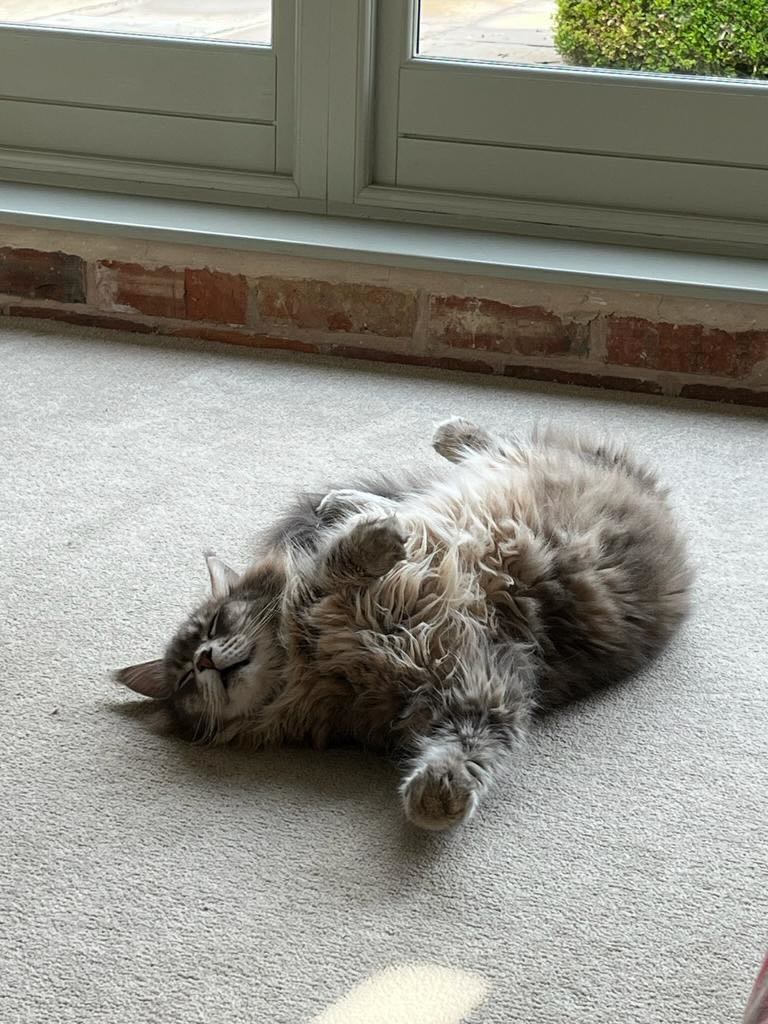The Impact of Consistency in Training Methods for Cats

The Role of Consistency in Cat Training
Training a cat can often feel like an uphill battle. However, consistency in methods is a game changer that many cat owners often overlook. The way you communicate, reward, and engage with your feline friend significantly influences their learning process. In fact, understanding how to implement consistent training techniques can transform a difficult training experience into a rewarding one, benefiting both the owner and the cat.
When exploring the impact of consistent training methods, consider the following key factors:
- Reinforcement Techniques: Positive reinforcement, such as treats, praise, or playtime, works best when applied uniformly. For example, using a specific brand of treat that your cat loves as a reward for good behavior helps create a strong association between the desired actions and positive outcomes.
- Scheduled Training Sessions: Regularly scheduled training sessions create a rhythm that helps your cat understand expectations. Most cats thrive on routine, so setting aside a specific time each day for training can improve retention and responsiveness. Consider short, consistent sessions of about 5 to 10 minutes to keep your cat engaged without overwhelming them.
- Clear Commands: Utilizing consistent verbal cues or hand signals fosters clarity in communication. For example, if you use the word “sit” along with an upward motion of your hand every time, your cat will begin to associate that command with the action. If you vary the commands or signals, your cat may become confused and less likely to respond.
Failure to maintain these consistent practices can lead to confusion and frustration for both the owner and the cat. Imagine a cat that is rewarded for sitting one day but is scolded for the same behavior the next. Such mixed signals can lead to anxiety, diminished trust, and resistance to training altogether. In contrast, consistency builds a trusting relationship, where your cat feels secure in understanding what’s expected.
Understanding the impact of consistency in training methods is not merely a training strategy; it is a profound element that influences overall behavior and enhances the relationship dynamics with your cat. By establishing a routine, utilizing clear commands, and reinforcing positive behavior, you pave the way for effective training sessions that strengthen the bond with your pet. In the end, investing time in developing these consistent practices not only promotes better behavior but also fosters a deeper companionship between you and your feline friend.
In conclusion, for cat owners navigating the world of feline training, embracing consistency in approach is pivotal. With patience, practice, and dedication to uniformity, you’ll find that training your cat becomes less of a chore and more of a delightful journey of learning and bonding.

LEARN MORE: Click here to discover essential tips
Understanding Training Mechanisms and Their Effectiveness
When it comes to cat training, the principle of consistency serves as the backbone of effective communication between you and your feline companion. To truly appreciate its impact, it is vital to delve into how training mechanisms work and why they thrive on uniformity. A cat’s learning capacity is significant; however, their receptiveness to training largely depends on the clarity and repetitiveness of the methods employed.
One of the fundamental aspects of training cats is the concept of conditioning, which can be categorized into two primary types: classical and operant conditioning. Classical conditioning involves associating a neutral stimulus with a positive or negative one, while operant conditioning focuses on the consequences of behavior – rewarding desired actions and discouraging unwanted ones. In this context, consistency becomes integral in shaping a cat’s behavior.
- Classical Conditioning: Think of how many pet owners use a clicker as a consistent sound to signal a reward. Every time a cat performs a desired behavior, the click sound, followed by a treat, reinforces that action. If the clicker sound is inconsistent, the association becomes muddled.
- Operant Conditioning: Utilizing similar rewards across training sessions for specific actions allows for quicker learning. For example, if a cat is consistently rewarded with a favorite treat for using the litter box, they are more likely to repeat that behavior. Inconsistent rewards can lead to confusion and frustration, stalling their progress.
The significance of consistency stretches beyond just the training techniques; it also encompasses an owner’s demeanor and interaction style. Reflect on the importance of approachability and tone. If a cat is rewarded positively for certain behaviors by one family member but scolded by another for the same actions, the resulting confusion can lead to anxiety and a breakdown in the training process. This inconsistency not only stifles learning but can also damage the trust that is essential for a healthy owner-pet relationship.
Furthermore, the choice of rewards plays a crucial role in training. Consistency in reward selection helps create a strong motivational framework. For instance, using the same type of treat during every training session will enhance your cat’s motivation to comply with commands. Alternatively, frequently changing the type of reward may lead to disinterest and make learning less effective.
Lastly, understanding the individuality of your cat cannot be overstated. Each cat reacts differently to various stimuli, and identifying what consistently motivates them can lead to better outcomes. Some might respond enthusiastically to treats, while others may find motivation through play or verbal praise. By remaining consistent with what engages your cat, you fundamentally boost the overall success of your training regimen.
Incorporating these principles allows owners to tap into their cat’s potential to learn effectively and efficiently. With a solid understanding of the various mechanisms at play, you can harness the power of consistency to not only foster better behavior but also create a more profound bond with your beloved pet.
| Training Method | Advantages |
|---|---|
| Positive Reinforcement | Encourages desired behaviors by rewarding success, fostering a positive bond between cat and owner. |
| Clicker Training | Provides clear communication of expectations, leading to quicker learning and improved focus. |
| Routine Sessions | Allows cats to anticipate training times, enhancing comfort and reducing anxiety. |
| Consistency in Commands | Reduces confusion and speeds up the learning process, leading to better long-term retention of commands. |
When employing methods like positive reinforcement, cat owners can tap into their pet’s natural instincts and willingness to learn. Not only does this increase the effectiveness of training, but it also helps build trust within the human-animal relationship, essential for a harmonious household. Moreover, clicker training serves as a tangible feedback mechanism, allowing cats to understand exactly what behavior is being rewarded. This specific feedback accelerates their learning curve, assuring owners of their progress.Establishing routine training sessions further solidifies the training framework. Cats thrive on routine, and knowing when they will engage in training sessions helps them feel more secure. This predictability plays a pivotal role in reducing anxiety, making them more open to learning.In addition, using consistent commands is vital for effective communication between an owner and their cat. Cats learn best when they are provided with clear, unchanging commands that they can associate with specific behaviors. Implementing these techniques not only aids in comprehensive training but also enhances the overall experience of pet ownership.
DIVE DEEPER: Click here to learn about clicker training
Building a Foundation: The Role of Routine in Training
Routine is a critical component in the training journey of cats, as it establishes a structured environment conducive to learning. Cats thrive on predictability and can become anxious or resistant in a chaotic training setting. By incorporating training into a consistent daily routine, owners can set the stage for successful behavioral modifications. The impact of routine extends beyond just training specific actions; it fosters a sense of security for the cat, which is essential for learning.
Establishing a predictable timeline for training sessions can drastically improve outcomes. For instance, scheduling short training sessions during times of the day when your cat is naturally more active, such as after a meal or in the early evening, takes advantage of their energies. Owners in the United States often find success by syncing training with their cat’s natural rhythms and interests, offering frequent, short bursts of engagement rather than lengthy sessions. This not only improves focus but also reinforces the idea that training is a fun, rewarding part of their daily routine.
Another significant aspect of routine is the concept of timing. The immediate availability of rewards following a desired behavior is vital for reinforcing that action. Inconsistency here can translate into confusion. For example, if a cat jumps up on the counter and receives a reward afterward, the cat may not connect the action of jumping with the reward if there’s a substantial delay in recognition. Timing, much like rewards, needs to remain consistent to enhance learning.
Utilizing Environmental Consistency can be another powerful tool in training. This involves ensuring that the training environment remains stable from session to session. A quiet room in your home that’s free from distractions can serve as an ideal training ground. Sudden changes in the environment, such as new smells from visitors or loud noises from outside, can disrupt a cat’s focus and lead to diminished training effectiveness. Training in the same safe space equips cats with a reliable environment to associate the training exercises with learning.
Consistency in verbal cues and commands is equally important. Just like dogs, cats respond to verbal commands, but the keywords should remain the same across lessons. For example, using the word “sit” with a consistent tone each time a cat is taught this command helps create a clear understanding of the action expected. In contrast, fluctuating between “sit”, “down”, or other variants can cause unnecessary confusion. To simplify this process, owners might benefit from creating a glossary of commands they plan to use, ensuring every family member is on the same page during training sessions.
The type and frequency of reinforcement can further highlight the importance of consistency. Research indicates that when cats receive immediate and predictable rewards for specific actions, enforcement becomes more effective over time. As cats thrive on patterns, the clear establishment of rewards for consistent actions leads to quicker mastery of commands. Owners may find that rotating between physical treats, playtime, or affection maintains interest and excitement, as long as the underlying correlation remains unchanged.
Ultimately, investing time in creating a consistent training methodology profoundly influences the overall effectiveness of training efforts and the nurturing of a gratifying bond between cats and their owners. Understanding and implementing these strategies can lead to a noticeable shift in behavior and learning, enabling cats to flourish in a supportive, structured environment.
DISCOVER MORE: Click here for the truth behind breed adoption myths
Conclusion: The Transformative Power of Consistency in Cat Training
In summary, the impact of consistency in training methods for cats cannot be overstated. A structured approach dramatically enhances a cat’s ability to learn new behaviors while simultaneously reducing the likelihood of confusion and frustration. By creating a reliable routine, employing immediate reinforcement, and maintaining a stable training environment, cat owners can pave the way for more effective learning outcomes. Studies suggest that cats thrive when their owners utilize consistent verbal cues alongside familiar rewards, making training not only more engaging but also a more fulfilling experience for both parties.
Moreover, the importance of timing and environmental consistency serves to enrich this training journey further. Owners must recognize the profound effect that a predictable schedule can have on a cat’s behavior and emotional well-being. This foundational stability ultimately nurtures a deeper connection between cats and their human companions, fostering trust and a sense of security in their evolving relationship.
As pet owners in the United States embrace these training techniques, they can witness firsthand how consistency leads to improved behavior, happier cats, and a more harmonious home. With a commitment to ongoing education and adaptation of training strategies, the possibilities for successful coexistence are endless. Thus, embracing a consistent training methodology offers not just effective learning but a pathway toward cultivating a lasting bond of love and understanding between cats and their owners.


